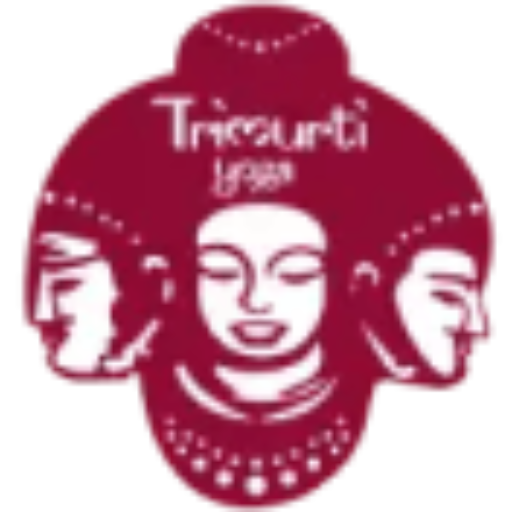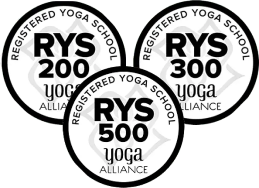
Chakras influence the flow of energy in your body. The seven primary chakras go from the base of the spine to the top of one’s head, each representing an individual purpose.
The Throat Chakra, also known as Vishuddha Chakra in Sanskrit, is the fifth energy center in the chakra system. The Vishuddha Chakras’ subtle energetic properties influence your ability to communicate, listen, and express yourself through higher forms of communication.
When you can freely express yourself, think creatively, and communicate without fear, your Throat Chakra is in perfect working order. However, when your fifth chakra is blocked or out of balance, you may find it difficult to express yourself, be innovative, and connect on a deeper level.
In this article, we are going to discuss the Vishuddha Chakra, which is also commonly known as the Throat Chakra.
What is the Vishuddha (Throat) Chakra?
The Throat Chakra or the Vishuddha Chakra is the fifth of seven energy centers that are mostly located in the center of the neck, near the thyroid gland and larynx, at the base of the throat. The Sanskrit term ‘Vishuddha’ generally refers to the removal of poisons and toxic things from the body. The Throat Chakra helps in the restoration of bodily energy through the removal of pollutants, hence promoting health and wellness.
Where is the Throat Chakra Located?
The Vishuddha Chakra is at the base of the throat, in the center of the larynx. Because of its physical location, the fifth chakra is also known as the Throat Chakra.
Its position also has an immediate effect on the organs and glands that surround it, including the thyroid and parathyroid glands, as well as the larynx and tongue. As a result, a balanced fifth chakra encourages the physical body’s proper functioning in this region.
What Happens When the Throat Chakra Is Not Balanced?
A Vishudhha or Throat Chakra imbalance can cause mouth ulcers, painful throats, stiffness in the neck, thyroid problems, throat infections, hearing disorders, and swollen or bleeding gums and teeth. It manifests emotionally in the form of difficulty listening to anything, fear of speaking up, hesitancy to express emotions, a lack of words to describe your feelings, aggressive behavior, a sense of being misjudged or misunderstood by others, the use of negative actions and words, and a general lack of connection to oneself.
Yoga Poses To Balance The Throat Chakra
Bhujangasana (Cobra Pose)
Lay on the yoga mat with your stomach pressed against the ground. Next, lift your upper body up and off the mat while pressing your hands into the ground. Positioning here, concentrate on stretching your neck as your shoulders drop, creating a distance between your chin and chest. Take long breaths in and out while gazing up. Return to the original position and repeat it five times.
Simhasana (Lion Pose)
Begin the posture in a sitting kneeling position with your knees wide on your mat. Turn your fingers inward and press your arms into the ground. Raise your spine through the crown of your head to straighten your throat. Deeply inhale, then as you exhale, let your tongue drop out of your mouth as you say “Haaaa.” Take five deep breaths while holding this posture.
Chakravakasana (Cat-Cow Pose)
In an all-fours position, shoulders perpendicular to wrists, hips squarely above knees. Inhale deeply while dragging your belly down. Stretch your chest and let your throat straighten. To fix your posture, breathe out and curve your spine, bringing your chin to your chest and squeezing your back. To open the throat chakra, repeat it 5-6 times, focussing on extending and compressing the throat area, as well as the back and tummy.
Sethubandhasana (Bridge Pose )
Perform the posture by lying flat on your back in the Corpse pose. Now bend your knees to make them perpendicular to the ground. While keeping your feet flat on the floor near your hips, place your hands gently on either side of your waistline. Slowly curve and raise your body into the air while sustaining your weight with your hands and knees on the ground. Hold this arched posture for 20-30 seconds before slowly breathing out and returning to a laying position.
Matsasana (Fish Pose)
Lay on the yoga mat in Shavasana, arms lying on either side of your body. Lift your upper body in an arch through the belly, leaving a slight space between your lower spine and the mat. Push through your palms while keeping your head flat on the mat beneath. Extend your neck and head backward slightly to open up the throat and make room for deep breathing. Breathe in and out five times before gently returning to the lying posture on the mat.
Characteristics Of The Throat Chakra
- The Vishuddha Chakra Element – space, or Akasha.
- The Throat Chakra is associated with the color blue, similar to the sky. It is important to understand that chakras do not have colors; instead, the element that surrounds them does. This signifies that the fifth chakra corresponds to the color of the space element.
- Each chakra is associated with a certain sound or seed mantra that balances and activates its energy. The mantra for the Throat Chakra is “Ham.”
- The sixteen-petalled lotus flower represents the Throat Chakra. The lotus represents purity and spiritual awakening, while the sixteen petals reflect the sixteen Sanskrit vowel sounds produced by the chakra’s movement.
- Akash, also known as Shuni Mudra, is the mudra for the throat chakra. Regular practice of this mudra can help you manage some health conditions caused by a blocked or unbalanced Vishuddha Chakra.
Conclusion
When used correctly, the Vishuddha Chakra’s energy can be your greatest strength. Expressing our feelings and speaking openly allows us to build strong connections with both the world around us and ourselves.
When we communicate effectively, we experience more understanding and good thoughts. This clarity can help us focus on our actual aims, reducing the influence of harmful factors and improving overall health and balance.
We Also Provide These Courses:








